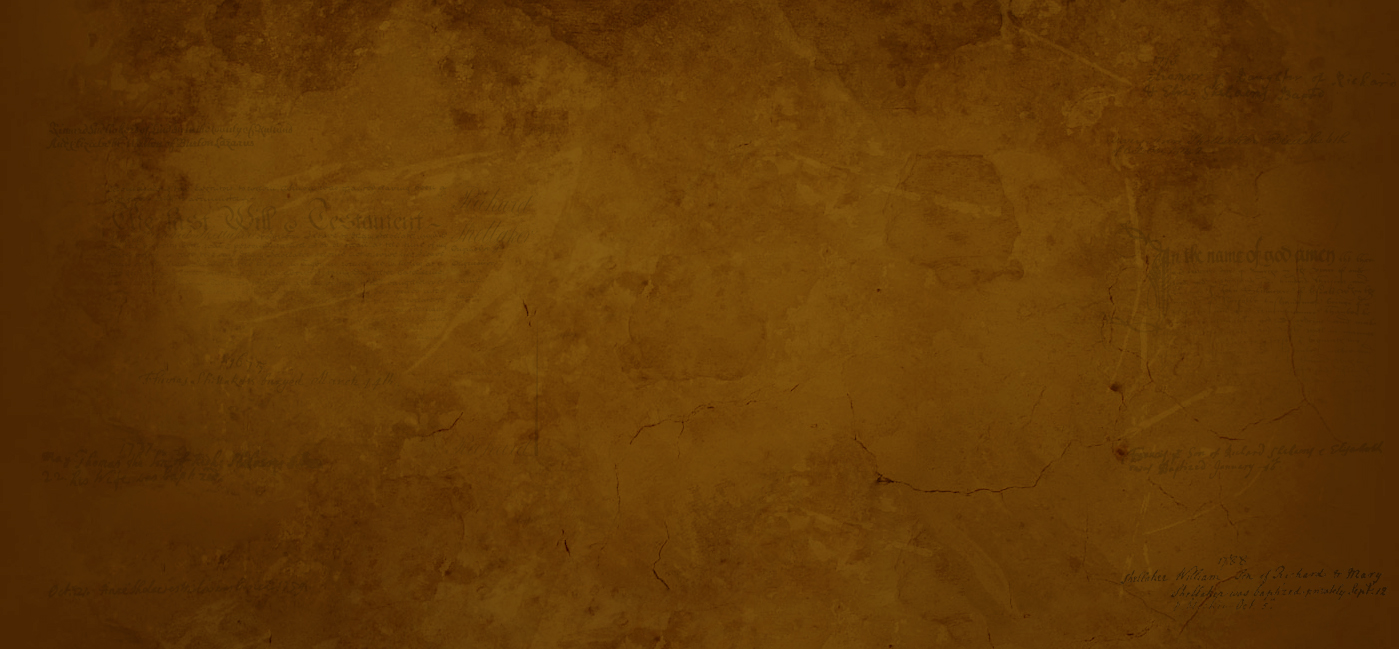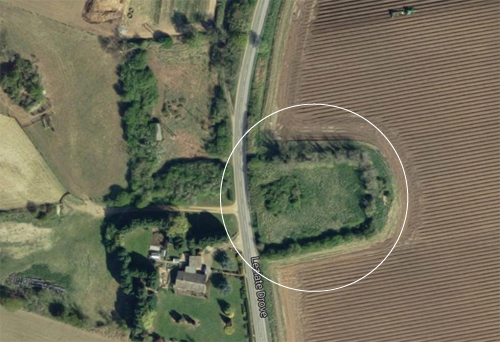

At the time of his death John Shellacare was living in Leziate, a village in County of Norfolk around 5 miles east of Kings Lynn. He had a wife named Margaret and a son Thomas, who at the time of the Will was below the age of 14 years. Therefore the son Thomas was born between 1554 and 1567. John Shellacare died in the first decade of the reign of Elizabeth the First which commence on 17th November 1558.
As, in the year 1567, he is married with a child it is almost certain he was at least 20 years of age at that time. Consequently his birth year is, at the latest, 1547, which was also the last year of the reign of Henry VIII (21 April 1509 – 28 January 1547). He would have also lived through the short reign of Edward VI, the disputed reign of Lady Jane Grey and that of Mary the First.
In fact, if John Shellacare, at the time of making his Will, had reached the age of 58 years he would have been born BEFORE the start of the reign of Henry VIII and entered into the world in the reign of Henry VIII’s father, Henry VII, who became King in 1485 after defeating Richard III at the Battle of Bosworth Field in the County of Leicestershire.
SOCIAL CLASS – HUSBANDMAN
John Shellacare is recorded as being a ‘husbandman’ which was a free tenant farmer or small landowner, and the Will indicates he was the latter as it appears he own land in his own right – see End Notes.
At this time people saw themselves as belonging to a particular social group at the top of which was the ‘Monarchy‘ followed by the ‘Nobility‘. Next in the social hierarchy were the ‘Gentry’ & ‘Professionals’, then ‘Yeoman’ & ‘Merchants’, followed by ‘Husbandman’ & artificers (manual craftsmen such as tailors, cordwainers, and carpenters). Below these groups were Labourers, Servants, Beggars and the poor. The social class of Yeoman, the one immediately above ‘Husbandman’ were defined as farmers who owned land (freehold, leasehold or copyhold).
Their wealth and the size of their landholding varied. They largely held freehold land and many Yeoman were growing in wealth – their average income being £50-£100 per year. Many yeomen were prosperous, and wealthy enough to employ servants and farm labourers. Some were as wealthy as the minor county or regional landed gentry and some even leased land to gentleman landowners. Those defined as Husbandmen, such as John Shellacare, were farmers of small farms – generally subsistence farming on rented land, earning rarely more than £20 (typically £10) per year. It was clearly possible to rise up the social scale from husbandman (certainly to yeomanry ) but it was also easy it was to drop downwards – even to the level of the beggars and poor as a result of poor harvests, harsh winters, injury, widowhood or hard luck.
At least 70% of the rural population consisted of the ‘vulgar and common sorts’ – that is the husbandmen and those below them.
MONEY
In his Will John Shellacare gives 10 pence to the parson to cover his tithe payment, the church in Norwich receives 4 pence, for repairs to Leziate church he gives 3 shillings and also 6 pence for the poor – a total of 4 shillings and 8 pence.
LIVESTOCK & ANIMALS
In total, from the list of bequests to his wife, his son and his servant, John Shellacare owned the following;
8 milk cows, 2 bullocks plus 2 young bullocks, 4 sheep, 1 grey gelding horse, a mare and another horse, 2 pigs, some poultry and 8 beehives with bees.
He also owned one bed, one brass pot, one kettle, one pan, six pewter plates, bowls and dishes and other non-identified household goods.
On his land he grew Wheat, Rye and Barley.
BURIAL
John Shellacare was buried in the churchyard of Leziate church. However since around 1800 nothing remains of the church but the foundations.
According to the website of www.heritage.norfolk.gov.uk The name Leziate comes from the Old English meaning ‘meadow gate’. Ashwicken is also derived from Old English and means either ‘place at the dwellings or buildings’ or ‘place at the ash trees’.
The same website states Leziate was recorded in the Domesday Book in 1086 and was held by a ‘Roger Malet’ – a Norman knight who came to England in the Norman Conquest of 1066. Apparently he held great power in East Anglia, and five of his descendants became Earls of Norfolk.
The medieval village of Leziate was once much larger, but the village had shrunk sufficiently by the late 15th century (that is around 1470 – 1500) for the parish of Leziate to be united with Ashwicken.
 All Saints’ Church in Leziate was in ruins by the 17th century (between 1601 and 1700), and there are now no upstanding remains of the building, although medieval building material, floor tiles and human remains have been found on the site. Pottery dating from the Late Saxon to the post medieval periods (post-medieval period classified as 1539 onward) and a medieval casket mount have been recovered from the fields surrounding the site of the church.
All Saints’ Church in Leziate was in ruins by the 17th century (between 1601 and 1700), and there are now no upstanding remains of the building, although medieval building material, floor tiles and human remains have been found on the site. Pottery dating from the Late Saxon to the post medieval periods (post-medieval period classified as 1539 onward) and a medieval casket mount have been recovered from the fields surrounding the site of the church.
In March 2015 I drove through Leziate, now consisting of relatively modern buildings. As my trip was unplanned, I did not find the site of the churchyard in which John Shellacare was buried in 1568.
However I have since located the site of where the church once stood. It is on the other side of the B1145 road to where the village of Leziate is now located, it is on Leziate Drove’. An image from Google Map of the area where Leziate Church once stood is on the right. The area of the church and churchyard is circled.
IS THIS MAN AN ANCESTOR?
There is no definitive evidence to connect John Shellacare, who died in Leziate in 1567/68 to the Shelacre / Shellaker family who can be traced from Loddington to Lyndon to Tugby and then to Billesdon. However due to the relatively close proximity of his abode in Leziate to Rutland & East Leicestershire and the rarity & uniqueness of the Shellaker/Shelacre surname it is reasonable to believe that he is connected to our family.
Previously the earliest record of a member of the Shelacre / Shellaker family located to date was from the year 1644 – the baptism in Loddington in east Leicestershire of Thomas, the Son of Richard & Joan Shelaker on 5th of May 1644. His siblings were Ellenor and Richard.
From this record we could assume Eleanor’s father Richard was born c.1616 and that his father, name unknown, was born c.1590. Thomas, the son of John Shellacare of Leziate, was born between 1554 and 1567 and consequently if we add 30 years onto each of his possible years to represent the time when he himself could be married and producing children we get 1584 and 1597.
Based on those dates Thomas, the son of John Shellacare of Leziate, could possibly be the father of the Richard Shelaker of Loddington and grandfather of Eleanor, Thomas and Richard. If that is correct, and as yet, I have no proof, then John Shellacare of Leziate who died in 1567/68 and who was most likely alive in the time of Henry VIII, is my 9 x great grandfather.
END NOTES
I remain puzzled regarding the houses and land in six different locations; Leziate, Glosthorpe, Wiggenhall, Wellhale, Gayton & Gayton Thorpe.
It is likely, in this period in our history, that John Shellacare’s land would only be one or more strips of land in a large Open Field – which now show as the ‘ridge and furrows’ we see in the East Midlands.
But I am confused when I try to understand his status. He is recorded as being a ‘husbandman’ – ‘a free tenant farmer’ or ‘small landowner with land in his own right’. The references to the Manorial Court Roll makes me think he is a just a tenant farmer but then he has land in six separate manors which makes me think he is a small landowner plus the Will mentions ‘houses‘ which is inconsistent, I would think, with just owning a few strips of land. And although John Shellacare leaves land to his son, that does not indicate he owns land himself, as tenants with ‘Copyhold of Inheritance’ can pass on the land to his son(s).
| YEAR | DATE | EVENT | |
| 1485 | 22nd August | King Richard III is defeated at the Battle of Bosworth in Leicestershire by Henry Tudor – the Tudor dynasty begins | |
| 1508 | Speculated | The year of John Shellacres‘ birth if he was 60 years old at the time of his death | |
| 1509 | 21st April | Henry VIII becomes King of England following the death of his father Henry VII | |
| 1528 | Speculated | The year of John Shellacres‘ birth if he was 40 years old at the time of his death | |
| 1536 | 17th May | Anne Boleyn, the 2nd wife of Henry VIII is beheaded at the Tower of London | |
| 1547 | 28th January | Henry VIII dies. His nine year old son Edward becomes King Edward VI | |
| 1553 | 6th July | King Edward VI dies at the age of 15 years | |
| 1553 | 10th – 19th July | Lady Jane Grey becomes Queen for 9 days until she is arrested and imprisoned | |
| 1553 | July | Henry VIII’s daughter Mary becomes Queen | |
| 1554 | 12th February | Lady Jane Grey is beheaded on Tower Green at the Tower of London | |
| 1554 | Speculated | The earliest year John Shellacres’ son, Thomas Shellacres, could have been born. | |
| 1558 | 17th November | Queen Mary I dies | |
| 1558 | 17th November | Elizabeth, the daughter of Henry VIII and Anne Boleyn becomes Queen – the Elizabethan era begins | |
| 1564 | 26th April | William Shakespeare is baptised in Stratford-upon-Avon | |
| 1567 | 23rd March | John Shellacres of Leziate in Norfolk makes his Will | |
| 1568 | 2nd April | Probate granted on John Shellacres’ Will following his death | |
| 1570 | 13th April | Guy Fawkes is born – later a member of a group who planned the failed Gunpowder Plot | |
| 1588 | July | The Spanish Armada is defeated by the English fleet commanded by Sir Francis Drake | |
| 1603 | 24th March | Elizabeth I dies – her 44 year reign on the throne ends. She is the last monarch of the Tudor dynasty | |
| 1616 | estimated | The Shellaker family are living in Loddington in East Leicestershire |